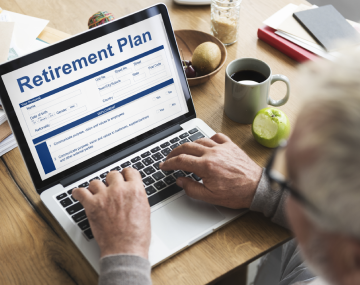Why did the Chancellor lower the tax-relief for buy-to-let investors and is it still tax efficient to invest in buy-to-let property?
Buy-to-let investors are able to claim tax relief on their monthly interest repayments at the top level of tax they pay, which means that some benefit from relief of up to 45 per cent.From April 2017, the amount landlords can claim as relief will be set at the basic rate of tax, currently 20%, with the change introduced over a four-year period.

Why did the chancellor cut tax relief investors can claim on mortgage interest payments?
According to the chancellor, the relief had contributed to the rapid growth in buy-to-let properties that accounted for more than 15% of mortgages taken out in 2015. "Buy-to-let landlords have a huge advantage in the market as they can offset their mortgage interest payments against their income, whereas homebuyers cannot. And the better off the landlord, the more tax relief they get", he stated. Critics agree that the relief gives landlords an advantage over first-time buyers.The Bank of England had been giving warnings about the housing market: "So we will act", said the chancellor, "but we will act in a proportionate and gradual way, because I know that many hardworking people who’ve saved and invested in property depend on the rental income they get".
Does the cut stop there?
No. A second hit on landlords’ tax breaks is planned from April 2016, when the current system that allows landlords to claim 10% of their rent for wear and tear will be scrapped. From that date, landlords will only be able to deduct costs they actually incur.
Is it down to revenue and reducing the deficit?
It is estimated that the relief costs the treasury somewhere in the region of 6.3bn a year. Undoubtedly, therefore, apart from the fairness issue, the chancellor needed to find the cuts he’d promised. A gradual removal of tax relief is expected to bring the treasury £225m in 2018/19, rising to £665m in 2020/21, while the removal of the 10% wear-and-tear allowance is forecast to make £205m in 2017/18, falling to around £165m in subsequent years.
Will the move resettle the housing market?
The director of affordable house price campaign Priced Out thinks it will: "For too long, buy-to-let landlords have been using an unfair tax break to out-compete first-time buyers and drive house prices further out of reach. For the Conservatives to be pro-homeownership it means they must take action against buy-to-let. We hope this excellent move to bring fairness to mortgage taxation will be just the beginning of the reforms needed to get the housing market into a fit shape for first-time buyers."
Is it fairer?
A more level playing field between first-time buyers and landlords is seen by many experts to be fairer. Had the tax break been completely withdrawn, buy-to-let would have been far less attractive to investors, and as one expert noted, "Thousands of landlords may well have struggled to keep up repayments on their mortgage or struggle to pay the tax, especially when interest rates rise."
Will it improve housing supply?
Housing experts believe that the cut in relief could exacerbate the housing shortage while also driving rents up. In short, many feel the changes do nothing to address the fundamental lack of supply in the UK housing market: "We could see buy-to-let investors feeling the squeeze and putting up rents. This would have a major impact on Generation Rent", one commentator noted. "Moreover, if interest rates increase over the coming years, and rental yields don’t keep pace, investors could be paying tax on a loss," he said.
Will landlords suffer?
The property website eMoov predicts that buy-to-let investors could be up to £2,000 a year worse off as a result of the change: "I can only see the result being an increase in rental prices which in turn further hampers those trying to save to get on the property ladder," said its founder. Other industry insiders do not feel that it will have an adverse effect on the buy-to-let market or the overall appeal of investing in the property market.
Will it affect how buy-to-lets are bought?
Post-budget, one property expert suggests that: "Landlords investing through limited companies should avoid this new personal tax increase, making it sensible to consider investing in buy to let through a company."
Is it still tax efficient to invest in buy-to-let property?
Capital expenses, those involved in buying and selling a property, such as the purchase price and agent and legal fees, cannot be offset against your income tax, but other costs can:
Mortgage fees
Broker and arrangement fees are tax deductible; the claim must be made in the year a mortgage was arranged. Other costs associated with taking loan finance are also allowable.
Mortgage interest
This is where the chancellor’s change has hit hardest: currently interest payments of £100 will cost some investors only £55 after tax relief, but from 2020 it will cost £80. Landlords who borrow at even a modest level might end up paying more in tax than s/he makes in profit.
Letting agent fees
If you choose to employ an agent to find a tenant or manage the property, expect to pay between 10 and 15 per cent of the monthly rental income in fees.
Securing a tenant
Renting your property privately, you can claim back the cost of advertising for tenants, purchasing a tenancy agreement, credit checking, referencing, deposit protection, and professional inventory costs. The costs add up to around £300 p.a.
Buildings and contents insurance premiums
Landlord insurance covers the building, liability as a landlord and loss of rent. Contents cover, home emergency, legal expenses and rent guarantee insurance could be added. For a typical buy-to-let property costs amount to around £200 p.a.
Maintenance and repairs
Any money you spend keeping the property in a good state of repair is tax deductible. You cannot claim for renovations, extensions, or improvements that add value to the property, but can offset expenses to correct wear and tear. Repairs can include broken windows and doors, cookers, white goods, furniture, or guttering, painting and decorating and replacing or fixing the roof.
Furniture
If the property is furnished, either a general "wear and tear" allowance or the exact cost of replacing individual items is currently appropriate. However, this is set to change after April 2016, when you will no longer be able to claim the annual "wear and tear" allowance but only the costs actually incurred.The claim after April 2016 will be the exact cost of maintenance and repairs and replacing furniture in the property. This only applies to existing furniture – you cannot claim back the cost of furnishing it in the first place.
Ground rent and service
If you are a leaseholder, you will usually pay ground rent to the freeholder. Service charges are common in blocks of flats and vary. Basic charges cover cleaning, maintenance, heating and lighting for common areas, but other costs could include security or concierge staff. On-site services such as gardening and electrical costs are also tax deductable.
Council tax and utility bills
Council tax or utility bills paid by the landlord on behalf of the tenant can be claimed even during "void periods", when no tenant is in the property.
Others
Other direct costs that can be claimed include phone calls, stationery, and the costs of travelling between different properties for the purposes of the rental business.
Conclusion
Buy-to-let will always be a tax efficient investment, but it is worth considering whether buying property through a company is more tax efficient. Letting out property is a business like any other where you pay tax on the profits you make after costs are deducted. The "allowable expenses" still cover quite a lot even though the generous mortgage relief previously linked to income tax banding, from 2017, will be reduced down over four years to 20 per cent regardless of the investor’s tax band. From April 2016, the annual wear-and-tear allowance will also disappear. Yes, the bonanza is over for those in the higher rate tax band, but investing in buy-to-let property is still tax efficient.
Any questions? Schedule a call with one of our experts.








